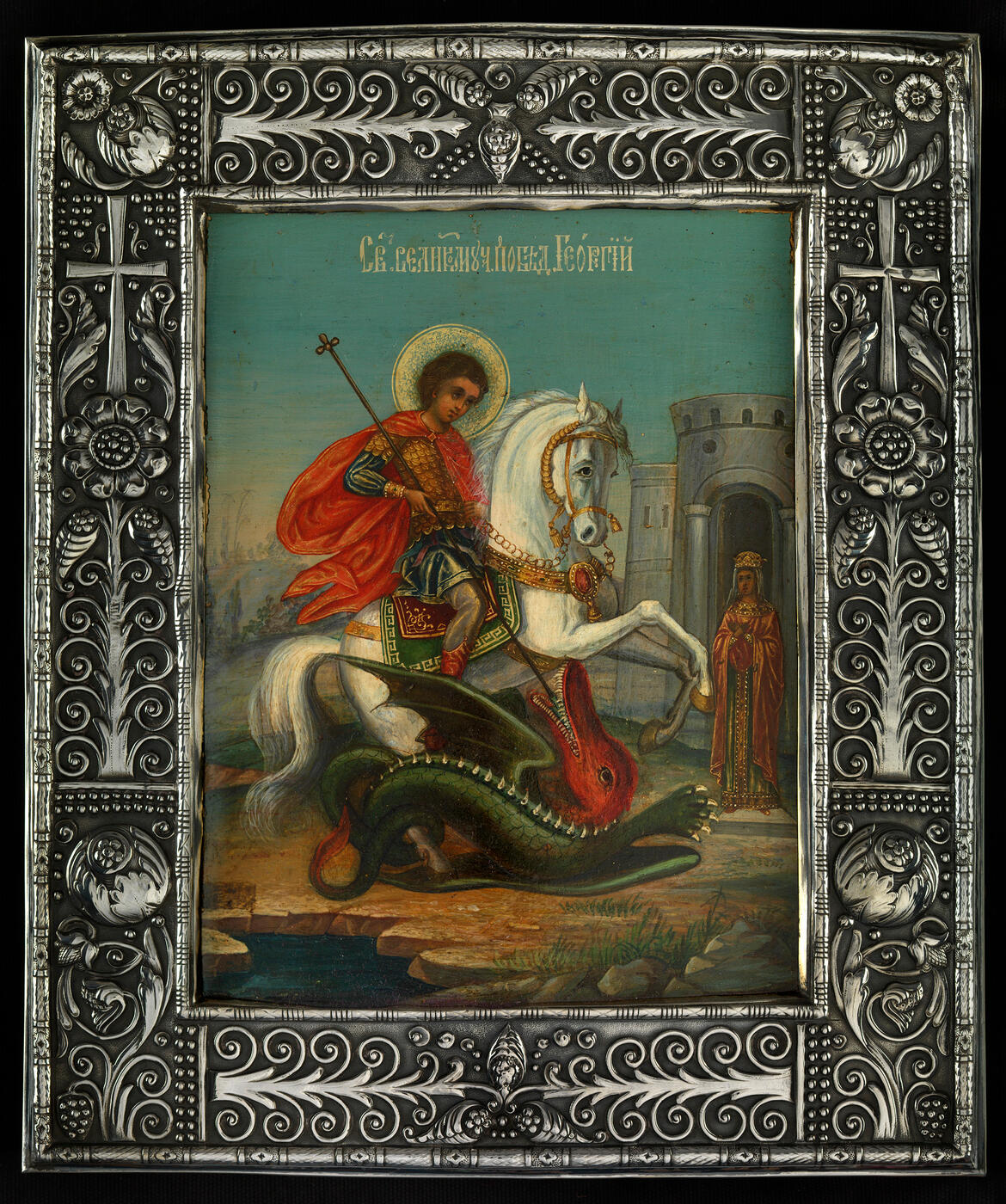27 Nov 2013 Russian Art Auctions
27 November 2013

* 455. A SILVER-FRAMED ICON OF ST GEORGE AND THE DRAGON
EARLY 20TH CENTURY, MIXED MEDIA ON PANEL, OKLAD AND SILVER PLAQUE WITH MARK OF IVAN KHLEBNIKOV UNDER IMPERIAL WARRANT, MOSCOW, 84 STANDARD
27 by 22.5 cm.
30,000–50,000 GBP
The theme of this bright and finely painted icon was very popular in the Balkans and was also the symbol of Moscow at the time. The work is adorned with a solid silver frame using large ornamental forms in the new Russian style.
The icon was a gift from Moscow City Hall to the Serbian politician and diplomat Nikola Pašić (1845–1926), who made an official visit to Russia in 1916. Pašić was one of the most influential Serbian politicians of the late 19th and early 20th centuries. He was an advocate for the ideology of a Greater Serbia and active in Serbian politics for half a century, serving for 48 years as a member of parliament, heading the powerful People’s Radical Party for 45 years (from its foundation in 1881 until his death in 1926) and serving as the country’s Prime Minister on 25 occasions between 1891 and 1926. His career spans a crucial period of Serbian history from the country’s independence, obtained at the Congress of Berlin in 1878, to the creation of Yugoslavia 40 years later. Pašić played a key role in all the major events of this period. He served as Ambassador to Russia in 1892–1894 and maintained a close diplomatic relationship with Russia in his later career (until 1917).
Russia provided funds to Serbia of more than 100 million gold rubles during the First World War and large sums collected by various social organisations, were donated to Pašić during his visit in 1916. Donors included the Petrograd City Committee for Assistance to Serbia (70,000 rubles), the Moscow City Duma (100,000 rubles), the Moscow Slavic Committee and the Moscow Zemstvo (50,000 rubles), and Kiev and Odessa City Halls (55,000 rubles). The Order of St. Vladimir of the 1st class was conferred on Pašić on 20 April 1916.
Pašić was resolutely hostile towards the Soviet Union, siding primarily with France and England. He strongly opposed the establishment of diplomatic relations with the USSR right up to his death.
The work is an outstanding example of Russian iconography and of the jeweller’s art in the Art Nouveau period. It is also a potent symbol of Russo-Serbian friendship, the importance of which is highlighted as we approach the 100th anniversary of the outbreak of the First World War.
A metal plaque on the reverse bears the inscription: “Blessing of the city of Moscow on the Minister President of Serbia Nikola Petrovich Pašić, 28 April 1916”. The inscription is in stylised lettering typical of craft artefacts from the Art Nouveau period.
Notes on symbols:
* Indicates 5% Import Duty Charge applies.
Ω Indicates 20% Import Duty Charge applies.
§ Indicates Artist's Resale Right applies.
† Indicates Standard VAT scheme applies, and the rate of 20% VAT will be charged on both hammer price and premium.